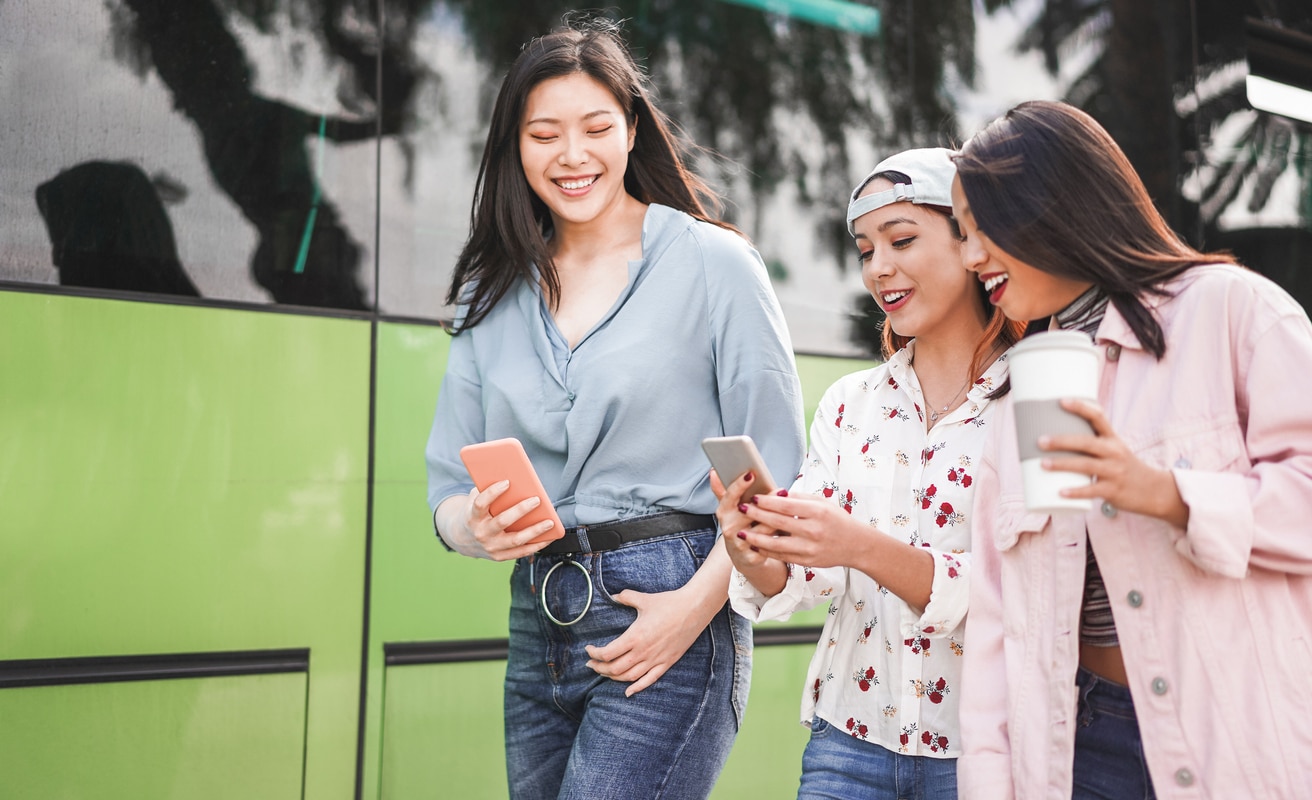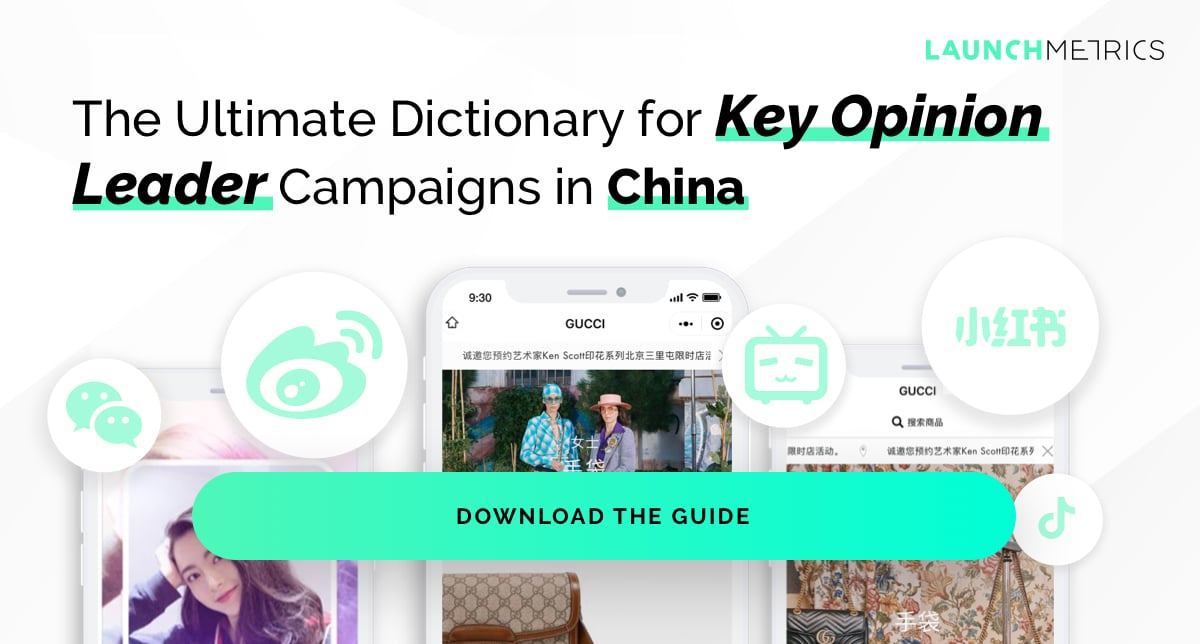Key Opinion Leader (KOL) marketing has become a must-have for most fashion, luxury, and beauty brands. Though their formats might be different, the ultimate goal is the same; to generate a good return on investment (ROI), and the higher the rate, the better.
It is often hard to measure the conversion rate or the ROI, as some brands would prefer to promote themselves through KOL campaigns, while some aim to drive sales. Brands may have different needs, yet the tactics to improve the performance of KOL marketing, through ROI or conversion rate, can be applied on most occasions.
Without guidelines, brands or KOLs themselves can fall into the red zone trap without being aware of them. For example, some KOLs present products in heavily photoshopped images and end up looking like sophisticated posters. They seem nice, but they are lowering the possibilities for the post to get more exposure, especially on platforms like RED. Also, they may not be as convincing as images. Instead, they can be taken “casually” without the heavy advertisement posters look.
Brands or KOLs also need to mind their word choices when describing products as we enter the age of everyone-can-be-a-KOL, whether sponsored or not, people are already getting tired of phrases such as: definitely, must, be sure to, and TOP 1, etc.
These aspects are just a glimpse into the misunderstandings of KOL marketing, and if brands want to generate higher ROI, there are several steps that they can follow.
In this article you’ll learn…
Step 1: Choose the right KOLs
The right Key Opinion Leaders for your KOL marketing strategy are chosen by two main factors: the first is that brands select the best suited platform(s) to implement the campaign. If seeking more promotion for your brand, Weibo and Bilibili are better to address that need. And if brands want to drive sales, WeChat subscription accounts, RED, Douyin, and Kuaishou are better for this.
The second factor is the KOLs themselves. After choosing the right platform that KOLs are based on, you will have to consider who to work with. Which can be determined with the answer to a key question: what consumer group(s) do you want to target in this campaign?
Get to know the KOLs that you consider sponsoring
After figuring out who you want to target in the campaign, brands need to assess whether the KOL’s followers match with their target consumers.
Spend time thinking about whether KOLs will help you reach your target audience, do their followers have high engagement with KOLs? Read comments that followers have left for KOLs. Do those comments sound like real interactions or they are sent by robots?
You can also dig further by looking at whether the KOL has mentioned your products or your competitors’ products before. What did s/he say about it? How did his/her followers react to the post?
If you have more time for KOL research, you can have a look at the profile pages of KOL’s followers. Are they real people? Is there any similarity or repetition in their personal descriptions? All these steps are to check whether the KOL’s followers are authentic or not.
Useful websites to help brands learn their KOLs
After delivering needs and budgets to agencies, brands will receive a list of KOL names. To make sure the campaign achieves brand goals, they will need tools to quantify a KOLs’ performance.
Let’s look at an example of KOL analytics below. After selecting a Social Media platform to look at, you can discover the KOL’s posts within recent time brackets such as three months, six months, or twelve months.

It is also vital to use tools to check whether the growth of the follower base is authentic or not. In the tendency example chart below, the blue bars represent the number of followers, while those lines are for interactions. There is a period of time when the three interaction lines reaching the bottom, yet the number of followers keeping growing. This is a bit unusual, and brands need to look closer at the authenticity.

Brands can also check the KOL’s interaction level with followers. Our tool for example, classifies levels into A, B, C, D, E, together with quantified numbers.

Step 2: Allow KOLs to show their creativity
After brands select matched KOLs to work with, they will send KOLs briefs showing how to introduce products. A brief is necessary as it makes sure KOLs mention key selling points in their posts.
But it is also important for brands to give rooms for KOLs to showcase their creativity based on the brief. KOLs know their followers better than brands, and they understand what style and type of content will appeal to followers and make them want to purchase brands’ products or services.
If people keep seeing the same content while browsing Social Media, they will be aware that this is a brand’s campaign, and KOLs’ user experiences may be regarded as not authentic as their posts are sponsored.
Home Facial Pro case study
According to China marketing watcher Mulan Jie (木兰姐), domestic brand Home Facial Pro (HFP) is a good example to learn from when it comes to how brands leverage briefs to generate better performance in KOL marketing campaigns.
HFP was a skincare brand founded in 2014. Based on Euromonitor’s statistics, the brand’s turnover grew from 278 million RMB to 2.2 billion between 2016 and 2019, and its CAGR (Compound Annual Growth Rate) was up to 101.92%. So what have they done right?
Other than grasping the trend of emphasizing ingredients, HFP also made full use of WeChat articles from 2016 to 2018. It is calculated that more than 1,600 WeChat subscription accounts have created over 10k articles for the brand. Those accounts varied from makeup, skincare, emotion to fitness, and the content of articles was different as well, in terms of selling points, article layout and design, bonus that those articles provided.
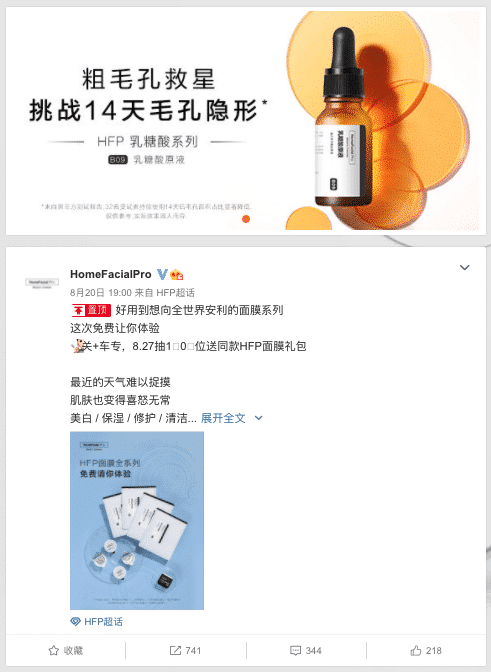
The selling points that HFP decided for different WeChat accounts were based on their followers, and they aimed to provide a solution in the articles. For example, on X account, HFP was there to address anti-aging. On Y account, it discussing helping people’s skin look brighter. On the account whose majority of readers are teenage girls, HFP positioned itself as a solution to solve acne breakouts.
Step 3: See the big picture of the whole campaign
We are not only talking about a single KOL’s marketing techniques, but a whole KOL campaign. This is for brands that have more budget, who not only work with one KOL to promote themselves. In bigger campaigns, there are three main options for brands to reach as many potential consumers as they can.
Option 1: Top – Mid – Small tier KOLs
This is a pyramid strategy, and so when applying the formula, if brands’ budget is abundant, they can add celebrities on the top.
Proya’s exfoliating face mask is a model that brands can learn from. The campaign lasted for seven months and the face mask first appeared in top live streamer Austin Li’s livestream, and it has been attached with the phrase “Recommended by Austin Li” ever since. With Austin’s background in the beauty industry, the product quickly earned trust from consumers.
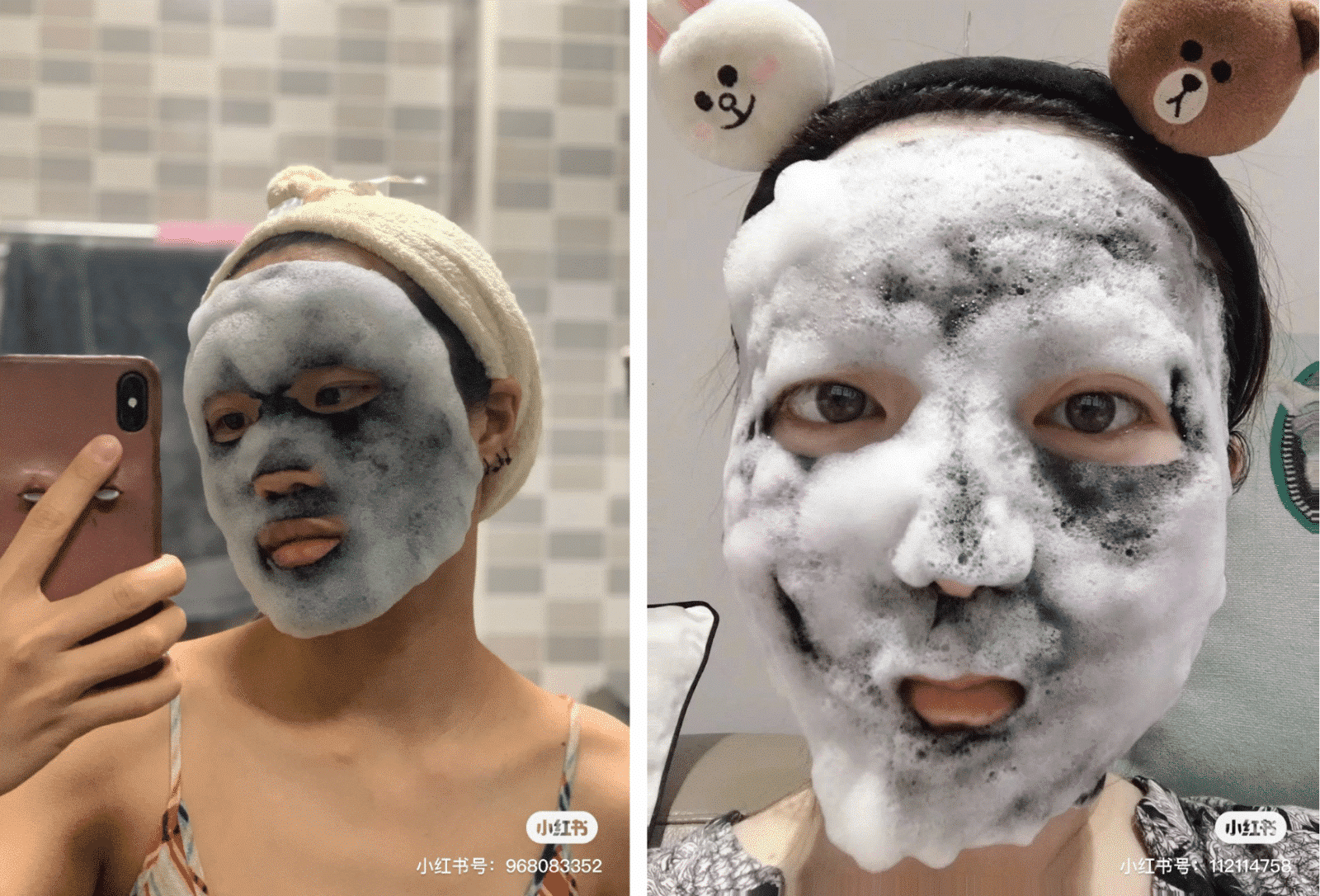
Being mentioned by Austin made it way easier for brands to approach other big KOLs and invite them to do the same thing. The more promotion from top KOLs, the more potential consumers that Proya has covered.
Proya’s face mask is fun to use, as it creates bubbles when you put it on, which is something eye-catching on social media. Together with the influence from Austin Li and other top KOLs, many middle and small tier KOLs were joining the trend voluntarily.
Not only KOLs, KOCs were involved and having fun playing around with the face mask, and most importantly, they posted their users’ experience on social media. The whole campaign created the atmosphere that the face mask was popular and it was trendy to use and post the experience online.
Option 2: Partner with a KOL
Instead of working with multiple KOLs, brands can choose to work with only one KOL. This can be risky, especially if the KOL has any scandal, it is likely to affect the brand’s reputation.
The KOL should be an expert in the field, and they need to be convincing for consumers. For example, Chinese underwear brand Ubras ranked as the TOP 1 both on the Double 11 in 2020 and 618 Shopping Festival in 2021.

The KOL that Ubras works with is top live streamer Viya, and this has left great impressions on consumers. Why? Because Ubras keeps playing the clip where Viya was introducing the brand on multi channels, either on Douyin or the product page on its Tmall flagship store.
Option 3: Start with Small tier KOLs or KOCs
This requires a lower budget for KOLmarketing campaigns, and it’s suitable for startup brands.
Small tier KOLs or KOCs (Key Opinion Consumer) ask for lower payment. They can also devote more time to create content for a post, and they are happy to follow brands’ instructions. In terms of the relationship with followers, small KOLs are more engaged in interacting with fans personally. Sometimes followers trust a small KOL better than a big one.
Vanzen is a Chinese beauty brand that leverages this tactic well. In October 2020, the brand managed to sell over 640k bottles of foundation. According to Caasdata, by December 19, 2020, more than 1,000 accounts have posted related content of the product. Among the TOP 10 most liked videos, only one account have over 100k followers, others have around 10k followers.
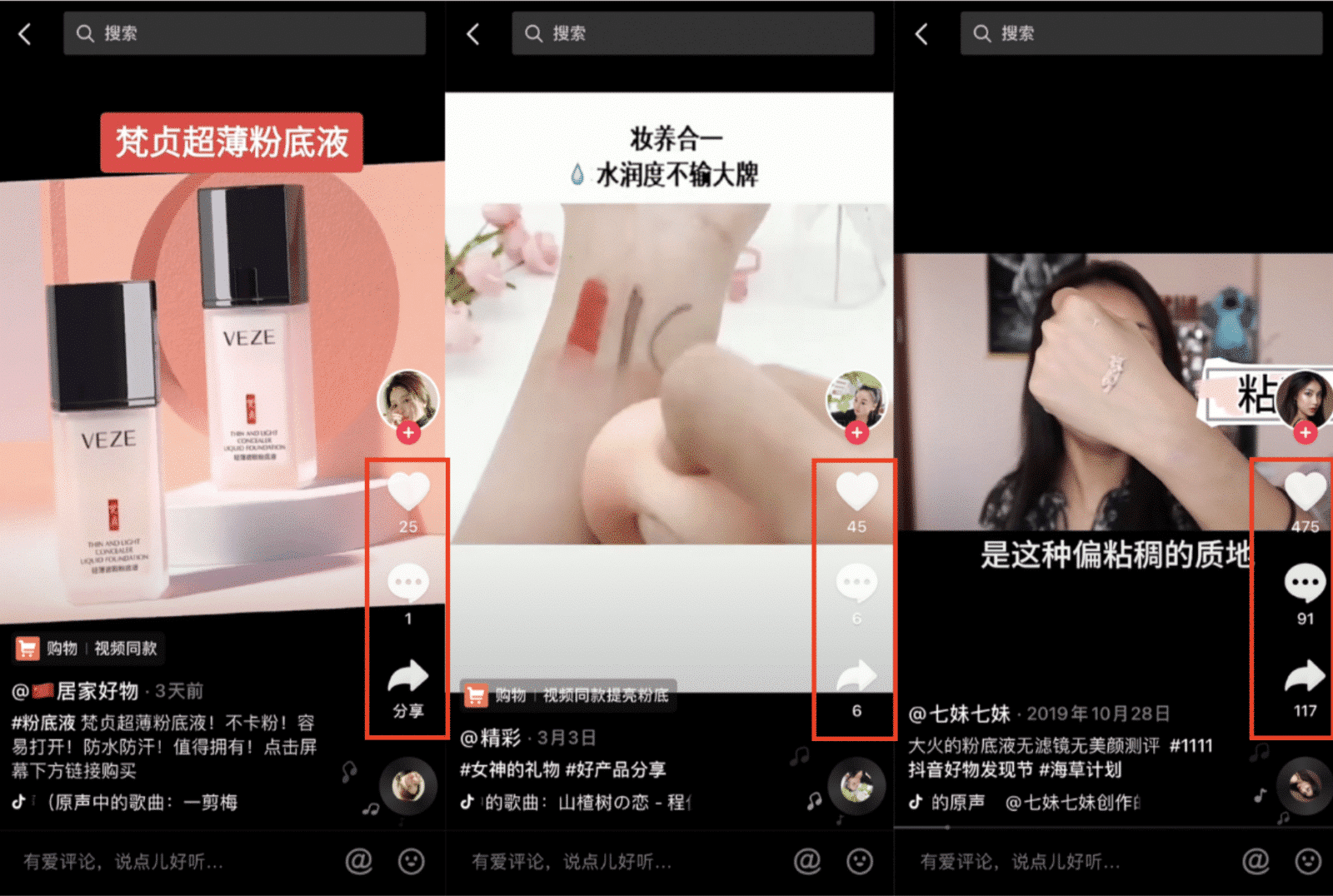
The way how Vanzen pays those small KOLs or KOCs is to share a high commission with them. Each KOC was given a link that followers can click and visit the shopping page, and those links allow Vanzen to track KOLs’ sales performance. Together, two foundations were sold at 58 RMB, and by selling them, for each order, KOC would have 31.32 RMB as commission.
But brands are not advised to adopt s high commission strategy for a long run as it might not be profitable in the end. It is only suitable for brands who want to promote themselves and increase sales amount in a short period of time.
Step 4: Reviewing is key
Finding the right KOL and tactics to run a campaign is a long journey for most brands. Each campaign could be considered as a practice to reach the goal. That’s why it is a vital for brands to have regular reviews of their campaign. The number of sales amount is important, and it is also suggested that brands could have a review on the KOLs that they work with in campaigns.
Here are a few questions that China marketing watcher Mulan Jie (木兰姐) suggests. Think about which KOLs are suitable to bring more exposure for brands? Which ones are better at driving sales? Is this KOL match with the product category, or would it be better if s/he is given another product to recommend? What are their shining points and downsides?
Rank them from A – D, and for KOLs who are at A and B levels, brands can consider having paid campaigns with them next time, and for C and D levels, perhaps brands can just send them gifts and have them promote products. The review needs to provide practical advice for brands’ future campaigns.
To learn more about the potential of Key Opinion Leaders, click below to explore our guide!
